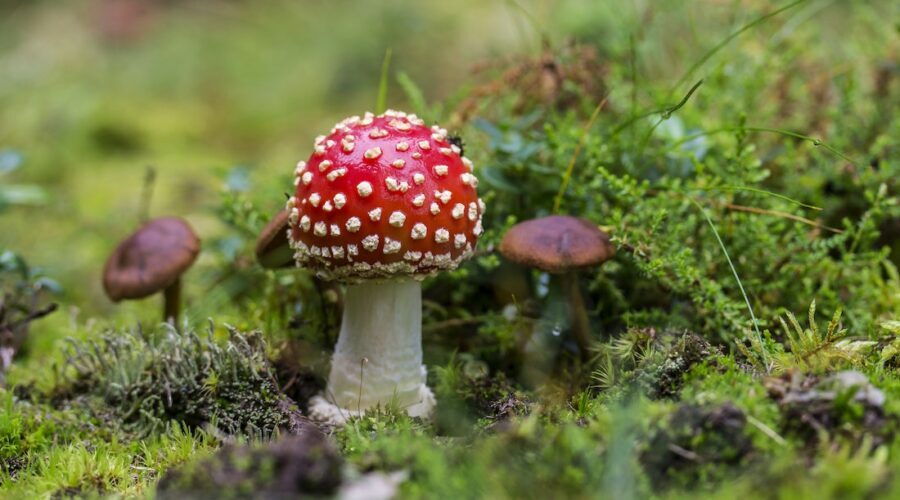Scientists Warn Against the Rising Popularity of Amanita Mushrooms — Should They?
Lately, more people are getting interested in Amanita muscaria, also known as the fly agaric mushroom. This mushroom is easy to spot with its red cap and white spots. It’s been famous in stories and legends for a long time. But now, its popularity is growing because people are curious about natural psychedelics. This has made scientists and health experts worried about the dangers of amanita muscaria mushrooms. But should they be?
New: Interested in Being Part of a Psychedelics-Focused Clinical Trial? Sign Up Here
The Allure of Amanita Muscaria
Historical Significance
Amanita muscaria has been around for a long time. People in ancient times used it in their rituals. It shows up in old art and stories. Some tribes in Siberia used it to enter different states of mind. Its bright red color and white spots make it look magical, which is why it appears in many myths and fairy tales.
Psychotropic Effects
The effects of Amanita muscaria can be different for everyone. Some people might feel happy and see strange things. But these effects can be unpredictable. You might also feel sick, throw up, or get confused.
Have questions about psychedelics and psychedelic-assisted therapy? Try out the beta version of HealingChat, HealingMaps AI chatbot that takes all our vetted content, clinics and retreats to answer all your questions in a safe environment. Try the beta version now!
Comparing Amanita Muscaria to Psilocybin Mushrooms
Differences in Chemical Compounds
Amanita muscaria and psilocybin mushrooms both make you hallucinate, but they have different chemicals. Psilocybin mushrooms have psilocybin and psilocin, which are less toxic. Amanita muscaria has muscimol and ibotenic acid, which are more dangerous.
Variations in Effects
The effects of these mushrooms are also different. Psilocybin mushrooms often make people feel more thoughtful and spiritual. Amanita muscaria can make you feel more erratic and unpredictable. This makes Amanita muscaria riskier to use.
Interested in MDMA Treatment? The FDA is close to approving MDMA Therapy. Get on the waiting list now!
The Rise in Popularity
Market Trends
More people are buying Amanita muscaria these days. This is because people are interested in natural psychedelics and the mushroom’s cool look and history. But this trend has also led to misleading ads that don’t talk about the dangers.
Influence of Social Media
Social media has played a big role in making Amanita muscaria popular. Influencers and content creators share their experiences with the mushroom, often making it look fun without talking about the risks. This makes more young people interested in trying it.
Potential Dangers of Amanita Muscaria
Toxicity Levels
Amanita muscaria is very toxic. The chemicals in it can cause serious poisoning. You might have seizures, get delirious, or even fall into a coma. In the worst cases, it can be deadly.
Health Risks
The health risks of Amanita muscaria are serious. Besides its toxic effects, it can cause stomach problems, heart issues, and mess with your brain. These risks are worse because there’s not much reliable information, and many ads are misleading.
Misleading Marketing Practices
False Health Claims
One big problem is that some products make false health claims. They say the mushroom has health benefits like psilocybin mushrooms, but there’s no proof. This can make people think the mushroom is safe and good for them, which is not true. Always make sure you purchase amanita muscaria products from trusted brands and vendors.
Expert Opinions and Recommendations
Insights from Mycologists
Mushroom experts, called mycologists, have important insights into the risks and benefits of Amanita muscaria. Their knowledge can help shape public health policies and education efforts. By listening to these experts, we can better understand the mushroom and how to stay safe.
Public Health Perspectives
Public health officials also play a key role in addressing the issues with Amanita muscaria. Their views can help create policies and rules that protect people and promote safe use. By working with mycologists and other experts, they can develop strategies to handle the rising popularity of Amanita muscaria.



